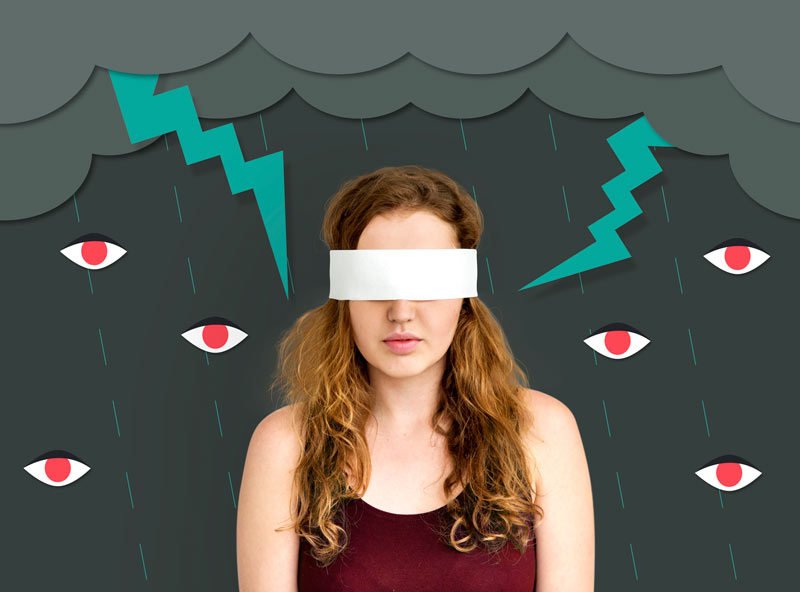Identifying Red Flags of Bipolar Disorder: Warning Signs to Watch For

in this blog, we will analyze the symptoms and signals to address bipolar disorder, shedding light on the subtle indicators that can alert us to its presence. Bipolar disorder, a condition characterized by extreme mood shifts between manic highs and depressive lows, affects individuals across the globe. While each person’s experience is unique, recognizing common warning signs is paramount for timely intervention and effective management. Join us as we delve into the nuances of bipolar disorder and equip ourselves with the knowledge needed to identify those red flags that may pave the way for understanding, support, and healing.
Understanding Bipolar Disorder: What You Need to Know
Bipolar disorder is a complex and multifaceted mental health condition that significantly impacts an individual’s emotional well-being and overall quality of life. This disorder is characterized by alternating episodes of extreme mood states, known as manic and depressive phases. During manic episodes, individuals may experience heightened energy levels, an inflated sense of self-confidence, and a decreased need for sleep. These periods can be accompanied by impulsive decision-making, increased talkativeness, and engagement in risky behaviors.
On the other hand, depressive episodes are marked by overwhelming sadness, loss of interest or pleasure in previously enjoyed activities, changes in appetite or sleep patterns, and a pervasive feeling of hopelessness.
Bipolar disorder’s prevalence is substantial, affecting people of all ages, genders, and backgrounds. Its impact extends beyond the individual, influencing relationships, work performance, and daily functioning. Early detection and intervention are crucial in managing the disorder effectively. Detecting red flags during the initial stages can lead to timely treatment, reducing the severity of symptoms and preventing potential complications. As we proceed, we will delve deeper into the specific red flags associated with both manic and depressive episodes, equipping you with the knowledge needed to recognize these signs and take appropriate action.
Red Flags of Bipolar Disorder: Recognizing Manic Episode Signs
Manic episodes, a defining feature of bipolar disorder, are periods characterized by an intense surge of energy, heightened mood, and an exaggerated sense of self-importance. During these phases, individuals might find themselves engaging in a flurry of activities, often taking on more than they can handle. They may display an uncharacteristic restlessness, talk rapidly, and struggle to focus on a single task due to racing thoughts. Heightened irritability is also a common manifestation, leading to conflicts and strained relationships.
Recognizing red flags associated with manic episodes is crucial for both individuals experiencing these symptoms and their loved ones. Increased energy levels that seem disproportionate to the individual’s usual behavior can be an initial indicator. Other red flags include a decreased need for sleep, with individuals feeling energetic even after minimal rest. Impulsivity and poor judgment might lead them to make hasty decisions with potential long-term consequences. Additionally, engaging in risky behaviors, such as excessive spending, reckless driving, or substance abuse, can be prominent signs of a manic episode.
To better grasp these red flags, let’s explore real-life examples. Consider an individual who suddenly takes on multiple ambitious projects simultaneously, barely sleeping, and displaying uncharacteristic bursts of irritability when questioned about their actions. Another example might involve someone exhibiting extreme impulsivity by making impulsive purchases, engaging in casual sexual encounters, or pursuing impromptu and potentially dangerous travel plans.
Identifying Red Flags of Bipolar Disorder: Depressive Episode Indicators
Depressive episodes, the other side of the bipolar disorder spectrum, bring about a profound shift in mood characterized by overwhelming sadness and a persistent feeling of emptiness. During these phases, individuals often experience a loss of interest or pleasure in activities that once brought them joy. They may withdraw from social interactions, experiencing a sense of isolation even when surrounded by others. Sleep disturbances, either in the form of excessive sleep or insomnia, coupled with changes in appetite and weight, are common telltale signs. Feelings of fatigue and low energy levels can make even simple daily tasks feel insurmountable, contributing to a sense of hopelessness.
Recognizing red flags associated with depressive episodes is essential for early intervention and support. Persistent sadness that lasts for an extended period, beyond the typical ups and downs of life, is a significant indicator. An inability to find pleasure in hobbies, previously enjoyed activities, or social interactions may signal the presence of a depressive episode. Disrupted sleep patterns, such as sleeping excessively or struggling with insomnia, can exacerbate feelings of despair. Additionally, fluctuating appetite and energy levels, often resulting in significant changes in weight, can accompany these episodes.
When to Seek Help: Taking Action on Red Flags
Recognizing the red flags of bipolar disorder is just the first step on the journey towards effective management and well-being. If you or someone you care about displays these warning signs, seeking professional help is of paramount importance. Mental health professionals possess the expertise needed to accurately diagnose and develop personalized treatment plans that cater to an individual’s unique needs.
The diagnostic process for bipolar disorder typically involves comprehensive assessments and evaluations conducted by trained mental health experts. These assessments consider various factors, including the individual’s medical history, symptom duration and intensity, and the impact of symptoms on daily life. The insights gained from these evaluations guide the development of an appropriate treatment strategy, which may include a combination of therapy, medication, and lifestyle modifications.
Maintaining open lines of communication with friends, family, and healthcare providers is pivotal. Engaging in candid discussions about your experiences can facilitate understanding and empathy, creating a supportive environment that fosters recovery. Encourage loved ones to learn about bipolar disorder to gain insight into the challenges you or others may face. Remember, seeking help is a sign of strength, and by taking proactive steps to address red flags, you’re taking control of your mental health journey and working towards a more balanced and fulfilling life.